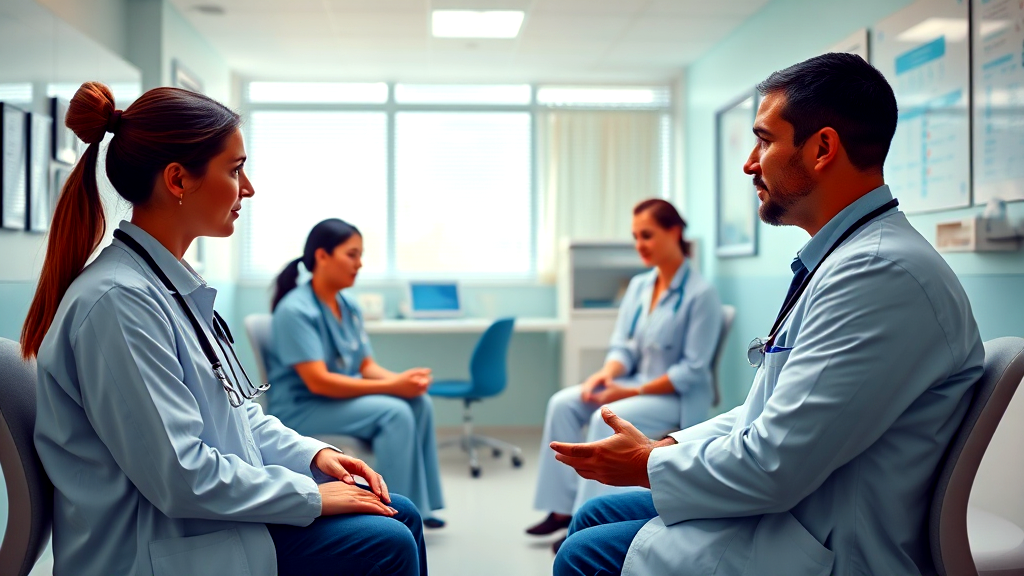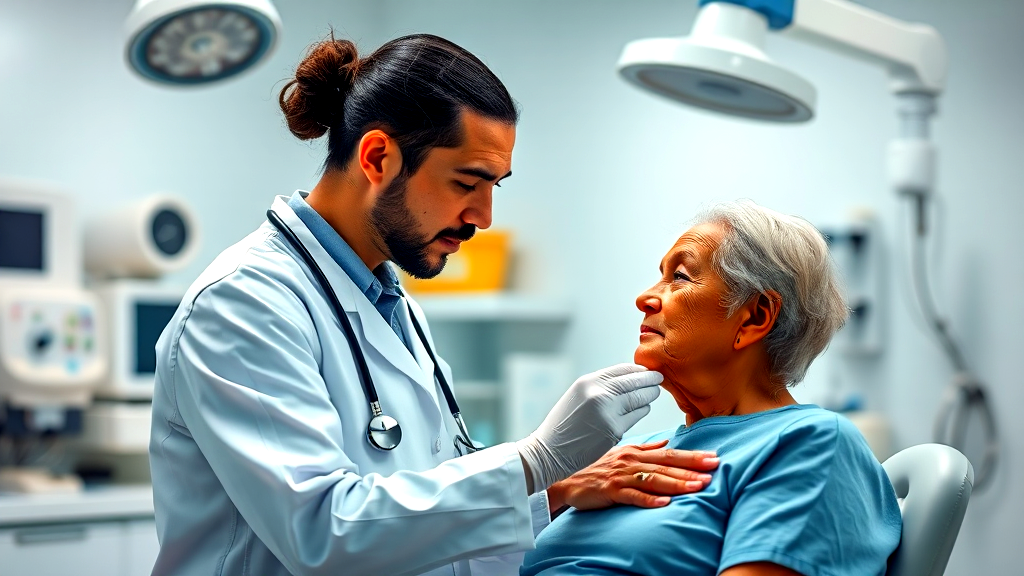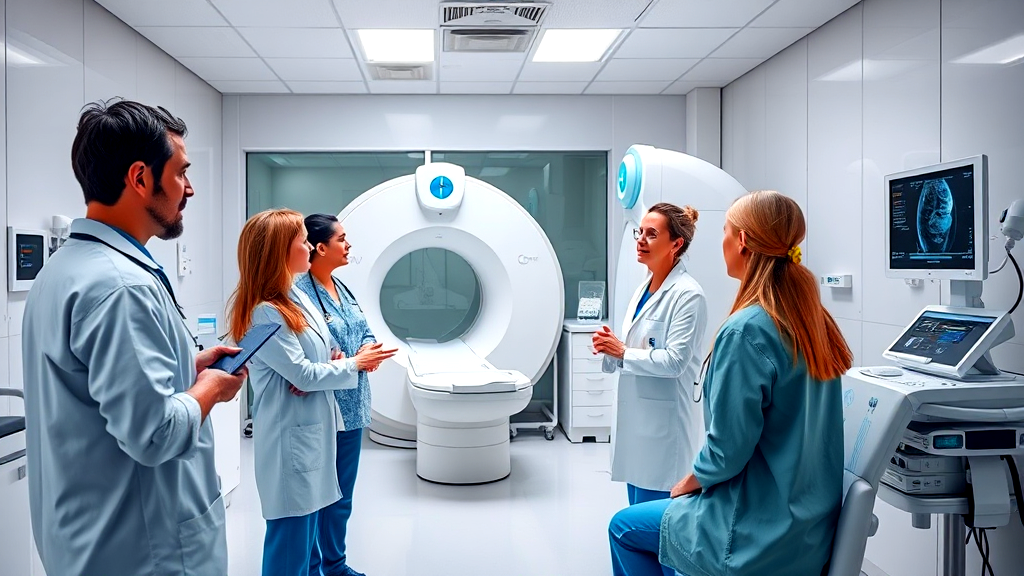Recognizing Early Breast Cancer Symptoms
Breast cancer is a sneaky foe, often lurking silently. But recognizing early symptoms can tip the scales in your favor. It all begins in the cells lining milk ducts, where DNA changes may occur. So, what should you look for? Notice any swelling, even if no lump is present. Skin dimpling or nipple changes are also warning signs. Breasts can feel lumpy due to normal variations, like fibrocystic changes. But stay alert for any unusual developments. Consulting a breast cancer clinic or the Mayo Clinic can provide peace of mind. Screening is vital, too. The American Cancer Society and the Mayo Clinic Press emphasize the risk of breast cancer can be reduced with early detection.

Understanding Breast Anatomy and Changes
Grasping the intricacies of breast anatomy is essential for spotting warning signs of breast cancer. Breasts can feel uneven, often due to benign conditions like fibrocystic changes. Yet, keeping an eye out for unusual changes is crucial. Remember, these changes might signal something more serious.
Here’s a quick rundown to keep in mind:
-
Lumps or Masses: A hard, painless lump with irregular edges may be concerning.
-
Swelling: Not just in the breast, but under the arm too.
-
Skin Changes: Redness, dimpling, or thickening should not be ignored.
-
Nipple Changes: Look for discharge or inversion that is out of the ordinary.
-
Size or Shape Alterations: Any significant change warrants attention.
-
Persistent Pain: Unexplained pain should be checked, even if it’s not severe.
-
Unusual Warmth: Unexplained warmth can be a red flag.
Stay informed with reliable sources like the Mayo Clinic and Mayo Clinic Press. Prevention and early detection are lifesavers. Use this knowledge to reduce the risk of breast cancer and ensure timely care.

Common Symptoms of Breast Cancer
Spotting the warning signs of breast cancer early can significantly improve outcomes. One of the primary symptoms is an unusual lump or mass. It’s the classic red flag many look for, but remember, not all lumps are malignant. Changes in breast size or shape, especially if one breast seems altered, deserve attention. You might notice swelling, and while it could be benign, a doctor’s opinion never hurts. Skin changes like dimpling or puckering can also be symptoms of breast cancer warning signs.
-
Unusual Lumps: Painless, hard masses warrant medical evaluation.
-
Breast Swelling: Significant swelling should prompt further examination.
-
Nipple Changes: Retraction or inversion can indicate underlying issues.
-
Discharge: Any nipple discharge unrelated to breastfeeding needs checking out.
-
Skin Texture: Look out for dimpling or a texture resembling an orange peel.
-
Nipple or Breast Pain: Persistent pain could be a red flag.
-
Color Changes: Redness or scaliness might indicate an issue worth investigating.
Frequent screening remains crucial. The Mayo Clinic Minute often highlights these symptoms, urging early detection. Take charge of your breast health and reduce the risk by staying informed.

Nipple and Skin Changes to Watch For
Changes in the nipple and skin are crucial breast cancer warning signs to monitor. While some variations might be benign, others demand attention. Here’s a rundown of key changes:
-
Redness or Rash: Persistent or unusual redness can be more than just skin irritation.
-
Nipple Discharge: Any non-milk discharge, especially if bloody, needs medical evaluation.
-
Inversion or Retraction: New onset of a pulled-in nipple is worth a doctor’s visit.
-
Thickening or Scaly Skin: This could be a sign of an underlying issue, not just dry skin.
-
Texture Changes: If the skin takes on an orange-peel appearance, take note.
-
Pain or Tenderness: While common, especially during certain times of the month, persistent pain might need a closer look.
The Mayo Clinic Minute often highlights these breast cancer risk indicators, emphasizing the importance of early detection. A proactive approach, including regular self-checks and keeping abreast with information from trusted sources like the Mayo Clinic Press or the American Cancer Society, can lead to better breast cancer care. Remember, understanding the risk of breast changes is key.

When to Consult a Doctor
Recognizing when to see a doctor for breast cancer warning signs can be life-saving. Prompt medical consultation is vital if you notice any new lumps or changes in the breast or nipple area. Trust your instincts and don’t second-guess. Here’s when to consider reaching out to a healthcare professional:
-
New Lumps: Any new or unusual lump should be checked. It’s better to be safe.
-
Persistent Changes: If changes in size or shape persist, it’s time to consult a doctor.
-
Nipple Discharge: Unexplained discharge, especially if it’s not milky, needs attention.
-
Skin Alterations: Noticeable changes like dimpling or redness are potential red flags.
-
Pain: Unusual or persistent pain shouldn’t be ignored, even if it’s mild.
-
Family History: Discuss any family history of breast cancer with your doctor to understand your risk.
-
Screening Recommendations: Follow the Mayo Clinic’s guidelines for regular breast cancer screening. Detect early and act quickly.
-
Expert Advice: The Mayo Clinic Health website and the American Cancer Society offer resources that are invaluable. Always stay informed.
Stay proactive. Be the captain of your own health ship!

Five Risk Factors for Breast Cancer
Exploring the risk factors for developing breast cancer can shed light on potential warning signs. Family history plays a significant role. If your mother or sister has had breast cancer, your own risk increases. Additionally, starting menstruation before age 12 or entering menopause after age 55 heightens risk. Dense breast tissue, which can make detection trickier, is another factor to consider. Hormonal therapies, such as hormone replacement therapy, can also elevate risk levels.
Alcohol is a sneaky culprit. Even moderate drinking can tip the scales toward risk. Obesity, especially after menopause, is a concern due to increased estrogen levels. Limited physical activity is a missed opportunity to reduce the risk.
-
Family history
-
Early menstruation
-
Late menopause
-
Dense breast tissue
-
Hormonal therapies
-
Alcohol consumption
-
Obesity
-
Limited physical activity
The Mayo Clinic Press advises consulting with healthcare providers to assess personal risk factors. Proactive care is essential. The Mayo Clinic Minute suggests regular screenings and lifestyle modifications. The American Cancer Society echoes this, emphasizing the importance of understanding the risk of breast cancer. Prioritize your health and stay informed.

Methods for Breast Cancer Screening
Exploring ways to screen for breast cancer is vital in identifying breast cancer warning signs early. Regular mammograms are the gold standard; they detect tumors before they’re palpable. But remember, they aren’t perfect. Dense breast tissue may obscure results, so additional tests like ultrasound or MRI might be needed. Ever heard of a breast MRI? It’s especially useful for those with a high risk of breast cancer due to family history or genetic mutations.
-
Mammograms: Detect abnormalities early, crucial for women over 40.
-
Breast MRI: Best for high-risk individuals, offering detailed images.
-
Ultrasound: Complements mammograms, especially for dense breasts.
-
Clinical Exams: Doctors check for lumps or changes.
-
Self-Exams: Knowing your body helps catch warning signs.
-
Genetic Testing: Identifies mutations increasing the risk of breast cancer.
-
3D Mammography: Provides a more detailed view of breast tissue.
The Mayo Clinic Minute suggests discussing personalized screening plans with your doctor. Triple-negative breast cancer, a more aggressive form, often requires vigilant monitoring. The Mayo Clinic Health team emphasizes staying informed about breast cancer care advancements. Free Mayo Clinic resources are available to guide you through breast health decisions.

Reducing Your Risk of Breast Cancer
Minimizing the risk of breast cancer involves adopting a proactive approach to health. Regular exercise, for instance, can help maintain a healthy weight, which is crucial in reducing the risk of breast problems. Monitoring alcohol intake is another biggie—keeping it to a minimum can significantly lower your breast cancer risk. Of course, staying informed about breast cancer warning signs is vital for early detection.
-
Maintain a Healthy Weight: Obesity increases the risk factor. Keeping a healthy weight helps lower this.
-
Exercise Regularly: Aim for at least 150 minutes of moderate activity weekly. Walking, anyone?
-
Limit Alcohol Consumption: Drinking less alcohol can reduce your risk of breast cancer.
-
Quit Smoking: Smoking is connected to a higher risk of breast cancer. Quitting is beneficial.
-
Breastfeed if Possible: Breastfeeding for several months can reduce the risk of breast problems later.
-
Consider Medication or Surgery: For those at high risk, preventive medications or surgeries might be considered.
Staying on top of breast cancer screening and being breast-aware ensures you catch any changes early. Keep informed, and seek advice from the Mayo Clinic Minute or other reliable resources for more insights.



 Facebook
Facebook
 X
X
 Pinterest
Pinterest
 Copy Link
Copy Link




